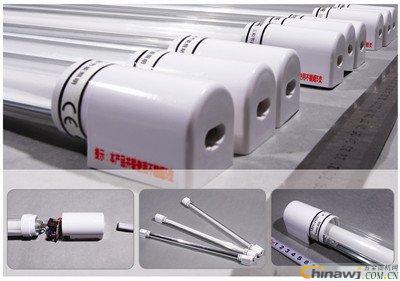On March 13, 2013, Yuanfang Optoelectronics, a company specializing in LED equipment inspection, released its revised performance forecast for the first quarter of 2013. The company adjusted its net profit expectations, reducing the earlier estimate by 5% to 35% and revising it to a range of 30% to 60%. In addition, the firm reported a year-on-year decline in both revenue and net profit for fiscal 2012, with total revenue reaching 182 million yuan, a drop of 11.45%, and net profit falling to 72.48 million yuan, down 25.07%. This trend was not isolated to Yuanfang; several other companies across the LED supply chain also faced significant profit declines. For instance, upstream manufacturers like Huacan Optoelectronics, Silan Micro, Ganzhao Optoelectronics, and Dehao Runda saw their net profits fall by 30.38%, 88.07%, 39.33%, and 57.14%, respectively. Fujing Technology, a supplier of LED crystal materials, experienced a 34.12% drop in net profit, while Moso Power, an LED power supply company, reported a 9.76% decrease. Keheng Shares, which produces LED luminescent materials, suffered a sharp 80.62% decline, and several packaging firms, including Changfang Lighting, Lehman Optoelectronics, Hongli Optoelectronics, and Guoxing Optoelectronics, all recorded significant drops in net profit, ranging from 27.45% to 66.45%.
In recent years, the LED industry, considered a key part of the national energy conservation and environmental protection sector, attracted massive investment. More Chinese companies entered the LED lighting market, leading to oversupply and a sharp decline in sales. Additionally, international trade barriers have further complicated the situation. According to officials at the Fuzhou Inspection and Quarantine Bureau, many countries have raised import standards for LED lighting products, making exports more challenging for Chinese manufacturers. Companies must stay updated on these evolving regulations to avoid export risks.
Jiuzhou Optoelectronics' General Manager, Xie Yongjun, attributed the widespread profit decline to overinvestment in the LED sector, particularly between 2009 and 2010. This surge in new entrants caused supply to outpace demand. Moreover, some LED products, despite lower prices, failed to meet consumer expectations in terms of quality and lighting performance compared to traditional energy-saving lamps, which affected purchase decisions.
To boost sales, many companies turned to exporting. However, increasing regulatory hurdles have made this path more difficult. Starting September 1 this year, the EU implemented stricter ecological design requirements for directional lights and LED products, raising energy efficiency standards by 2.5 times. From February 1, all LED lamps exported to the EU must pass enhanced electromagnetic field (EMF) tests to ensure safety. In May, Mexico introduced a new mandatory standard for LED lamps, setting strict energy efficiency, classification, and labeling rules for outdoor use. These regulations highlight the growing complexity of the global LED market.
Sanhe Energy Saving, known for its tube-in-tube energy-saving lamps, has gained popularity due to its cost-effectiveness and reliable after-sales service. The company guarantees that all its energy-saving tubes meet high technical standards, with a power factor of at least 0.95 and total harmonic distortion no more than 15%. Sanhe emphasizes transparency and quality, positioning itself as a leader in the energy-saving lighting transformation.

Smart Toilet
With the continuous development of science and technology, users' requirements for bathroom equipment experience are constantly improving, and smart toilets are becoming more and more popular. It incorporates cutting-edge technology to provide users with a more convenient and luxurious bathroom experience.
Auto-flush: Intelligent toilets are often equipped with sensors that automatically flush when you leave the seat. This hands-free operation adds convenience and helps maintain cleanliness and hygiene.
Seat heating: A cold toilet seat can be uncomfortable, especially during the colder months. Smart toilets usually have a built-in seat heating function, which can adjust the temperature according to preferences, providing a warm and comfortable seating experience.
Adjustable water temperature and pressure: Smart toilets can often set the water temperature and pressure for bidet cleaning to suit your comfort and personal preferences.
Bidet Cleaning: Bidet toilets often include a bidet feature that sprays water for personal cleansing after using the toilet. This feature eliminates the need for toilet paper and provides a more hygienic and refreshing cleaning experience.
Odor-removing features: Some smart toilets come with built-in deodorizers that help eliminate unpleasant odors. These deodorizers typically use carbon filters or other technologies to neutralize and remove odors from the toilet area.
Additional features: Depending on the model, smart toilets may have additional features such as air dryers, night lights, self-cleaning features, touchless controls, built-in music speakers, Bluetooth connectivity, and even integrated health monitoring.
Stylish design: Smart toilets are designed with an eye toward aesthetics, often featuring sleek, modern designs that complement a variety of bathroom styles. The clean lines and streamlined appearance create an overall sense of modernity and luxury.
Smart toilets offer a range of benefits including enhanced hygiene, convenience and increased comfort. While they tend to be more expensive than traditional toilets, many people find the advanced features and improved user experience well worth the investment.
Smart Toilet, Automatic Toilet, Intelligent Toilet, Electronic Toilet, Bidet Toilet
Guangdong Fabia Intelligent Technology Co., Ltd , https://www.smartfabiatoilet.com
